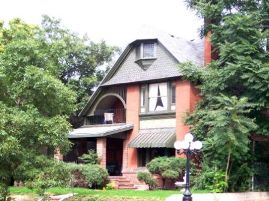Wood Flooring Goes Green
 Denver
remodeling has gone green. Environmentally conscience consumers are
driving builders and home product manufacturers to emphasize
environmental responsibility. Even products like hardwood flooring -
that might not seem to lend themselves to a “green” lifestyle – are
getting an environment-friendly makeover. Denver
remodeling has gone green. Environmentally conscience consumers are
driving builders and home product manufacturers to emphasize
environmental responsibility. Even products like hardwood flooring -
that might not seem to lend themselves to a “green” lifestyle – are
getting an environment-friendly makeover.
“For some people, it’s understandably hard to imagine how you can cut
down an old growth pine or hardwood tree, turn it into a beautiful floor
and still feel you’re doing your part to protect the environment,” says
Don Carlisle, owner and president of Carlisle Wide Plank Floors. “It’s
only possible if the wood is harvested from a forest managed according
to sustainable forestry practices.”
“That means carefully assessing the age and growth pattern of a tree
before deciding whether or not to harvest it,” he says. “If the decision
is made to harvest, then the sawyers must consider how to do that
without causing trauma to surrounding trees or negatively affecting the
area’s wildlife.”
Carlisle, whose family-owned business has been practicing sustainable
harvesting for more than 40 years, says builders are discovering that
environmentally conscious products also make good business sense. “Wood
is an endlessly renewable resource if we take care of our forests,” he
says. Harvesting trees that have reached maturity and begun the decline
in their life cycles helps maintain the overall health of the forest.
Declining trees continue to draw resources from the eco-system,
resources needed for new growth to survive. Responsibly harvesting older
timber allows new growth the opportunity to thrive.
Reclaiming used wood from old buildings is also recognized as a green
building practice. “We also recycle old wood from buildings slated for
demolition,” says Carlisle. The reclaiming process gives builders access
to some rare, high quality antique wood, takes the wood out of the waste
stream and often preserves a piece of a historic building that cannot be
saved otherwise.
Beautiful, rare antique woods like chestnut, pine and hemlock are often
found in old buildings, factories, farmhouses and barns. Carlisle,
recognized as a leader in reclaiming wood by the 2004 National Floor
Trends Magazine Market Study, salvages old wood piece by piece from old
buildings. Wood used in nearly every part of a structure – from roof
beams to barn doors – can then be turned into beautiful, durable
flooring. “Reclaimed wood has a singular beauty and depth of character,”
says Carlisle. “Putting it in your home is like taking part in a piece
of American history.”
Reducing waste and pollution are also key concerns for green building
practices. Manufacturing processes are becoming more refined to minimize
discarded materials and by-products. Carlisle has also been pro-active
in reducing the level of volatile organic compounds (VOCs) in its
finishes. The practice makes business sense as well, enabling the
company to ship its wood to every state in the country because the
product complies with every state’s regulations on VOC levels.
“It’s important for everyone to take proper forestry management and the
use of reclaimed wood very seriously,” Carlisle says. “You have to have
the fundamental belief that we can live in harmony with the proper use
of our resources. Then you can feel very comfortable using these
resources in products for your home.”
By: Michael Sinclair
Article Directory:
http://www.articledashboard.com
To learn more about Carlisle Wide Plank Floors and green building
practices, call (800) 595-9663 or visit the Web site at
www.wideplankflooring.com.
- ARA.
 If you are looking for a
Denver remodeling contractor, please call us today at 303.274.0489 or complete our
online request form. If you are looking for a
Denver remodeling contractor, please call us today at 303.274.0489 or complete our
online request form.
|



